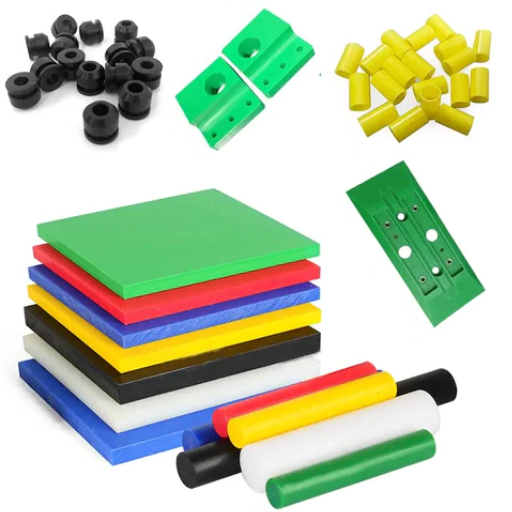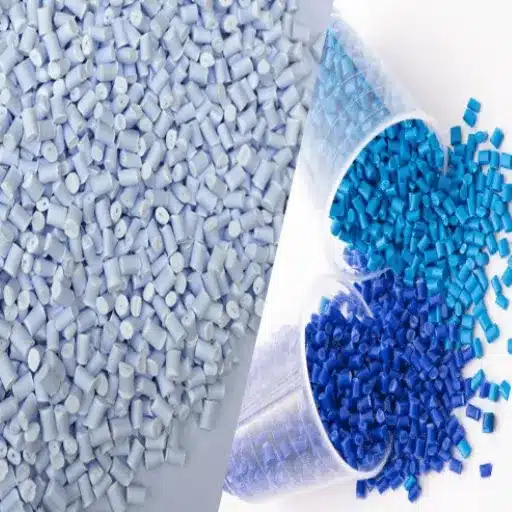Ask any advanced materials scientist about those with exceptional performance, and the answer would probably be Ultra-High-Molecular-Weight Polyethylene. Due to its remarkable durability, abrasion resistance, and wide range of applications, this material is used in everything from medical devices to heavy machinery. Yet, what exactly does UHMW stand for, and what makes it unique? This article presents the science of UHMW, emphasizing its properties and highlighting some of the latest technologies that make this material invaluable to engineers. If you’re a seasoned professional or simply curious about some state-of-the-art materials, this article will provide you with insight into how UHMW has revolutionized engineering and manufacturing.
Understanding UHMW and Its Significance
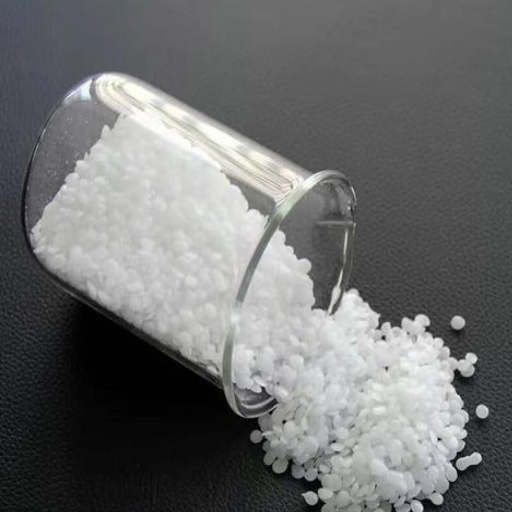
Defining UHMW and Its Applications
Ultra-High-Molecular-Weight Polyethylene (UHMW) is an exceptionally durable thermoplastic known for its very high strength-to-weight ratio and wear resistance. It is composed of polyethylene chains with an astronomical molecular weight. Due to its low friction, self-lubrication, and excellent impact resistance properties, it is considered highly suitable in industrial settings where it must withstand rigorous stress for an extended period.
One of the better-known uses is in the manufacture of conveyor systems, whereby the properties of low friction and resistance to wear increase the life expectancy for parts such as belts and guides. UHMW also finds wide application in fabricating marine dock fender pads, which reduce wear caused by docking forces from vessels. In heavy construction, UHMW is in great demand for chute liners, truck bed liners, and industrial equipment components because it withstands abrasion by extremely harsh materials and conditions. Also, due to excellent biocompatibility, there have been increasing applications in medicine for prosthetics and surgical instruments.
From automotive, food processing, mining, and healthcare, UHMW, with its versatility, continues to lead in the class of materials designed specifically for hostile environments. Its special combination of durability, chemical stability, and ability to resist extreme abrasive actions guarantees it as a prime consideration in modern-day engineering and manufacturing processes.
The Importance of Molecular Weight in UHMW
The molecular weight of Ultra-High-Molecular-Weight Polyethylene (UHMW) is considered a crucial criterion that significantly contributes to its high rating for characteristics and applications in various fields. Molecular weight refers to the length and complexity of the polymer chains; here, in the case of UHMW, the chains are much longer than those present in standard polyethylene materials. The extended chain structure allows the material to exhibit greater mechanical strength, wear resistance, and impact resistance than usual, making it ideal for harsher environments.
The molecular weight of UHMW typically ranges from 3.1 to 5.5 million g/mol or higher, whereas low molecular weight polyethylenes vary from these values. The higher molecular weight directly contributes to its extremely low coefficient of friction; hence, it achieves its smoothest operation in applications such as conveyor systems, bearings, and guides. From the standpoint of abrasion resistance, the deviation brought on by this molecular structure is substantial, as testing under similar conditions shows it surpasses other engineering plastics, such as nylon and acetal.
Considering chemical resistance, UHMW’s dense and tightly wound molecular network renders it highly stable against exposure to strong acids, alkalis, and a variety of organic solvents. This makes it particularly suitable in places where chemical processes and mining industries require durability in harsh environments. On the other hand, it excels at preserving structural integrity and performance characteristics across a wide temperature range, providing a further reason to keep it as the front-running option in engineering and manufacturing fields.
Undoubtedly, knowledge and optimization of molecular weight for UHMW would enable the most excellent full utilization of its potential. There are times when engineers and product designers specify molecular weight parameters that will work best for their needs, and in doing so, they, in effect, ensure that the UHMW will maintain the perfect balance of strength, flexibility, and longevity.
A Comparison between UHMW and Other Plastics
Unlike other plastics, Ultra-High Molecular Weight Polyethylene (UHMW) exhibits superior mechanical performance and a broader range of applications. Standard polyethylene does not have the same impact as UHMW, nor does it withstand wear under very demanding industrial uses. For example, UHMW has an impact strength approximately four to six times greater than common thermoplastics, such as HDPE (High-Density Polyethylene) and PVC (Polyvinyl Chloride).
UHMW exhibits superior sliding properties and reduced energy loss in moving parts due to its lower coefficient of friction compared to Nylon or PTFE (Polytetrafluoroethylene). Although Nylon boasts higher tensile strength, it is more prone to moisture absorption, which affects its dimensional stability. In contrast, UHMW is hydrophobic, a property that prevents it from experiencing such dimensional changes. PtFE, on the other hand, though famous for its non-stick properties and tolerance to high temperatures, is less resistant to abrasion compared to UHMW, thus making the latter more suitable in any repeated mechanical stresses.
Added to this are the factors of cost, which also promote UHMW against high-performance plastics such as PEEK (Polyether Ether Ketone) or Polycarbonate. These alternatives may perform well at extreme temperatures or under specific chemical conditions; however, UHMW performs similarly within normal operational ranges but at significantly lower prices, making it a distinct choice for volumes or projects where cost is a key concern.
Ultimately, application requirements such as environmental conditions, mechanical loading, and budget constraints will largely dictate choices between UHMW and other plastics. The unrivalled mix of durability, low friction, and affordability has placed UHMW as the reference material in engineering and manufacturing.
Properties of UHMW Polyethylene
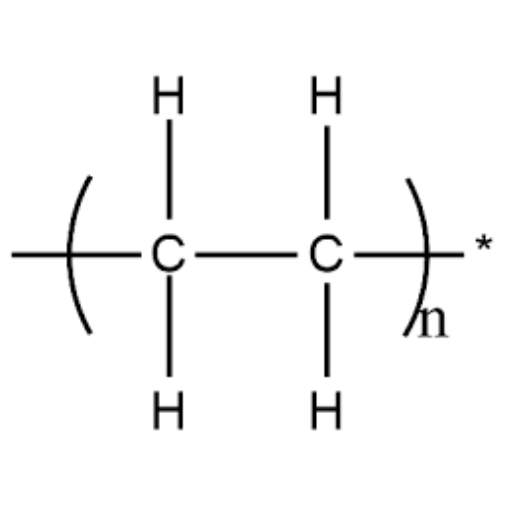
Physical Characteristics of UHMW Material
UHMW polyethylene (Ultra-High-Molecular-Weight polyethylene) is renowned for its outstanding physical properties, which have made it the preferred choice amongst various industries. This thermoplastic has an incredibly high molecular weight, ranging from 3.5 to 7.5 million, which is significantly superior to that of ordinary plastics in terms of impact resistance and durability. It offers a low coefficient of friction, which allows applications such as conveyors to operate smoothly while reducing wear and energy consumption.
Another notable characteristic of UHMW is its resistance to abrasion, which is significantly better because the abrasion wear rate is substantially lower than that of steel or nylon. The water absorption percentage is almost negligible, standing at less than 0.01; therefore, poor choices are made in areas exposed to moisture. Another attractive characteristic of UHMW is its chemical resistance, which withstands most acids, alkalis, and organic solvents without degradation; hence, positioning it as an often preferred choice in chemical processing applications.
Thermally, UHMW performs well within a wide temperature range, from approximately -200 to +80 °C (-328°F to 176°F). Since it is best suited for cryogenic applications, where it exhibits excellent dimensional stability, it is not ideal for high-heat applications, given its relatively low melting point of approximately 275°F (135 °C).
The lightweight nature of UHMW polyethylene (0.93-0.94 g/cm³) makes it easy to handle without compromising strength. The non-stick surface, combined with food-safe certifications in many cases, makes it a frequent choice in the food industry for applications requiring FDA- and EU-compliant plastics. All such properties combine to make UHMW polyethylene a versatile material for demanding and varied applications.
Thermal and Chemical Resistance Properties of UHMW Plastic
Ultra-high molecular weight polyethylene exhibits unmatched resistance to extremely high and low temperatures, as well as most chemicals, making it suitable for a wide range of industrial applications. At pure continuous operation at working temperatures from approximately -452°F (-269°C) to 180°F (82°C), UHMW plastic permits slightly higher temperatures intermittently than continuously. Such large intervals cover applications at both cryogenic and moderate heat levels of operation.
When chemically resistant, UHMW plastic is practically unaffected by acids, alkalis, and organic solvents. It will withstand deterioration or attacks from strong chemicals, such as sulfuric acid, sodium hydroxide, and hydrocarbons, even after prolonged exposure. In addition, its moisture absorption is low (usually less than 0.01%), ensuring it will not swell or lose strength in the presence of water or moist environments, thereby further enhancing its dimensional stability.
Such features make UHMW much sought after in pharmaceutical, chemical processing, and food manufacturing industries, where chemicals or sterilization processes are standard. With their resistance to demanding thermal and chemical conditions, as well as their high performance, UHMW polyethylene stands tall as a partner material to meet the weathering operational demands.
Impact Strength and Durability of UHMW Polyethylene
Ultra-High Molecular Weight (UHMW) polyethylene is a plastic that boasts unparalleled impact strength, excelling above many other engineering plastics and metals in the most exacting applications. Its shock-absorbing power is often applied in situations where materials are simultaneously subjected to elevated stresses in operational conditions. For example, it offers much greater resistance to impact forces compared to materials such as nylon or polypropylene, thereby providing materials with longer-life application resistance.
Performance testing and enhancements over the years have established the exceptional durability of the materials, enabling UHMW to withstand repeated impacts in applications such as conveyors, liners, and packaging equipment without compromising its integrity. Its low coefficient of friction also makes it less prone to wear when subjected to abrasion. Thus, any components fabricated from UHMW polyethylene will continue to perform optimally even under challenging operational conditions for an extended period, thereby reducing the common instances of frequent replacements and downtime in industrial settings.
Additional improved grades of UHMW polyethylene formulations developed by manufacturers aim to deliver better wear resistance, impact resistance, and UV protection. This will ensure the continued acceptance of this material in mining, construction, and heavy machinery, where durability, reliability, and resistance to wear are paramount.
Applications of UHMW in Various Industries
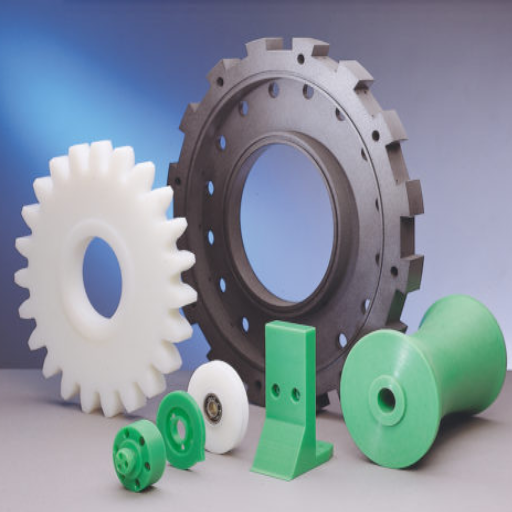
Use of UHMW in Manufacturing and Engineering
This high-performance polymer, UHMW-PE, offers exciting properties in the manufacturing and engineering sectors. Low friction, coupled with the self-lubricating nature, supports the smooth functioning of machinery and production lines, making it possible to minimize wear and reduce maintenance costs. UHMW applications are abundant in conveyor operations; for instance, UHMW is used for guide rails, wear strips, and chain guides to ensure smooth functioning with minimum wear.
It offers wear resistance and impact resistance for manufacturing industrial parts, such as gears, rollers, and bushings, that are subjected to high stress and repetitive movement. Another benefit of the hardness of UHMW is that it withstands chemical exposure well, which is particularly important in industries such as food processing and the pharmaceutical industry, where strict hygiene standards are maintained. These combined advantages continue to make UHMW a material of choice for engineers and entrepreneurs to harness in creating novel applications that enhance productivity and prolong the service life of critical machines.
Role of UHMW in Medical Applications
Ultra-High Molecular Weight Polyethylene (UHMW) is crucial in the advancement of modern medicine due to its unique set of characteristics. Its sheer biocompatibility makes it highly suitable for molecular-level medical implants, such as acetabular cups in hip replacements and parts of knee prosthetics, while minimizing the risk of any biological reaction. The high resistance to wear of UHMWPE greatly contributes to the longevity of the implants, thereby reducing the chances of revision surgeries and resulting in better patient outcomes.
Another significant advantage for medical applications is the extremely low coefficient of friction, which improves joint replacements by mimicking the smooth movement of natural joints. Resistance to impact and fatigue is an additional benefit, enhancing durability against put-on stresses from a person’s daily physical activity. Additionally, the manufacture of surgical instruments, guides, and trays with excellent resistance to repeated sterilization cycles without deterioration is a significant application of UHMW, all of which contributes to infection control.
Recent improvements in UHMW modification have significantly enhanced its performance in the medical sector. Cross-linked UHMW, for example, further enhances wear properties and resists oxidative degradation, thereby addressing long-term implant performance issues. Overall, UHMW continues to hold open the door for pioneering medical applications, improving the quality and sustainability of care.
UHMW in Food Processing and Packaging
Ultra-High-Molecular-Weight Polyethylene (UHMW) has become an indispensable material in the food processing and packaging industries due to the unique combination of its properties. Featuring a low coefficient of friction, UHMW minimizes wear and tear on machinery while ensuring the gentle movement of food products along processing lines, thereby minimizing damage to the products themselves. At the same time, UHMW is non-porous and does not absorb moisture, ensuring hygienic conditions in food production environments, which is a top requirement.
One of the top attributes of UHMW in this regard is its stellar ability to resist abrasion, enabling it to be used in high-speed conveyor systems and cutting surfaces. It consequently fits with stringent regulatory standards, with FDA and USDA approvals, ensuring food safety throughout the process. UHMW parts also generally help keep a process efficient by allowing line speeds to increase while maintaining precision, particularly in packaging systems, where consistency is essential.
In recent years, these applications have seen the production of wear strips, guide rails, and star wheels for food facilities with relatively high levels of automation. These components not only lengthen the life of the machinery but also enhance productivity by streamlining operational workflows. Furthermore, its insulating properties help maintain the integrity of temperature-sensitive goods during transportation and packaging. With these benefits, UHMW stands out as a key material for pioneering solutions in modern food processing and packaging that enhance operational sustainability and cost-effectiveness.
Comparing UHMW with HDPE

Differences Between UHMW and HDPE
While both Ultra-High Molecular Weight Polyethylene (UHMW) and High-Density Polyethylene (HDPE) are members of the polyethylene family, they exhibit significant differences in their properties, applications, and performance. These differences play a crucial role in determining the most suitable material for industrial or commercial use.
Molecular Structure and Density: UHMW has a considerably higher molecular weight than HDPE, making it highly durable in wear-and-tear applications. This structural advantage makes UHMW best suited for heavy impact and high-friction applications. HDPE has a lower molecular weight, yet still exhibits adequate toughness, making it ideal for light- to medium-load applications where cost is a significant consideration due to its relatively lower density.
Mechanical Behavior and Wear Resistance: UHMW exhibits higher wear and sliding resistance, making it a valuable material in high-friction environments, such as conveyor systems and surfaces for sliding. HDPE, however, remains resistant to impact, but is less resistant to extreme wear conditions. This distinction relates to their application in physically demanding environments that require long life and minimal maintenance.
Temperature Resistance: Both plastics may be used interchangeably in moderately cold to moderate temperature ranges. However, UHMW is especially ranked higher where sub-zero temperature performance is of prime importance, owing to its superior cold resistance and retention of impact strength even in chilling conditions. HDPE is well-suited for use in even colder climates, but it is somewhat prone to brittleness at extremely low temperatures.
Rough Applications: UHMW is primarily preferred in high-durability industries, such as food processing, mining, and the chemical industry, while HDPE is commonly used in areas requiring easy processing, including piping, outdoor furniture, and packaging.
Cost Considerations: UHMW typically has a higher price tag compared to HDPE due to its superior properties and more complex production process. HDPE is the material if cost matters so much, unless the application requires the peculiar features of UHMW.
These differences enable industries to make more informed decisions regarding material selection by ensuring a balance between performance, cost, and longevity that is appropriate for each application.
When to Choose UHMW Over HDPE
The right choice for applications demanding excellent durability, impact resistance, and low friction is UHMW (Ultra-High-Molecular-Weight Polyethylene). For example, manufacturing, mining, and food processing greatly benefit from UHMW’s wear resistance and chemical stability. High-abrasion applications are also well-suited for UHMW, such as conveyor systems and chutes, where materials are subjected to everyday wear and tear. It is usually preferable to choose solvent-resistant linings and machine boxes that are subjected to profound impact due to their outstanding resistance to impact.
In instances where an application must stand extreme temperatures or harsh chemicals, UHMW provides enhanced physical characteristics over standard HDPE. For example, the low coefficient of friction ensures that sliding parts move more easily, which, in turn, means that less maintenance is required and the overall equipment has a longer lifespan. Additionally, UHMW is FDA-approved for food contact applications, making it a more acceptable option for food and beverage production lines that require stringent hygiene and safety procedures.
Although superior to HDPE, the expenses that accompany UHMW must be weighed against the performance requirements of the industry. _reserved
Cost Considerations for UHMW and HDPE
When evaluating the cost implications of UHMW (Ultra-High-Molecular-Weight Polyethylene) and HDPE (High-Density Polyethylene), industries need to weigh material efficiency against budget constraints. UHMW, known for its superior durability, abrasion resistance, and low friction, often comes at a premium. This higher price is justified by its extended lifespan, lower maintenance costs, and improved performance in demanding applications. For example, industries that use UHMW in conveyor systems or wear parts benefit from fewer replacements and downtime, resulting in cost savings over time.
On the other hand, HDPE provides a cost-effective solution to applications that do not require UHMW’s advanced properties. With its balance of strength, chemical resistance, and affordability, HDPE is a reliable material for less-intensive uses. Industries such as packaging, piping, and construction often favor HDPE due to its lower upfront costs while still offering adequate performance.
Ultimately, the choice between UHMW and HDPE should be based on the application environment, the frequency of part replacement, and long-term cost efficiency. While UHMW’s initial high cost may be viewed as restrictive, its durability, combined with maintenance savings, delivers a compelling return on investment and makes it a viable solution for demanding high-performance applications. Conversely, HDPE is a suitable choice for projects where budget constraints are a priority and performance requirements are not urgent.
Future Trends in UHMW and Polyethylene Materials
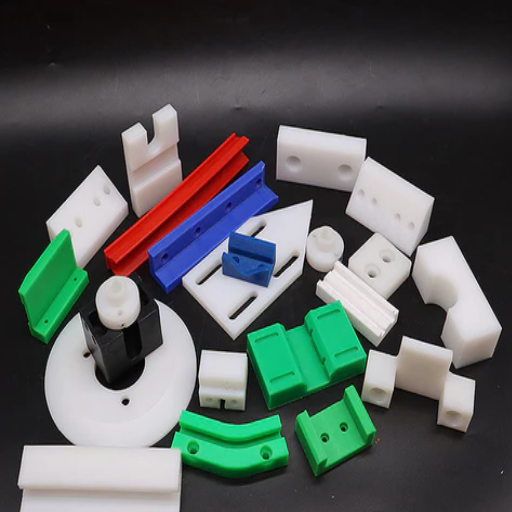
Innovations in UHMW Technologies
The developments in Ultra-High Molecular Weight Polyethylene technology over the past few years have been remarkable. Creating different polymer blends with enhanced properties, such as wear resistance, impact strength, and temperature resistance, appears to be one of the most significant advancements. These blends are often tailored for industries such as automotive and aerospace, helping manufacturers utilize the material effectively under harsh conditions. Thus, with the addition of additives such as anti-static agents and UV stabilizers, the applicability of this version of UHMW has been extended to situations and environments where typical UHMW would not suit.
Another significant innovation would be the experimentation with advanced manufacturing processes, such as additive manufacturing (3D printing) and precision machining, for more complex and bespoke UHMW components. Hence, new applications are emerging in the medical devices and robotics fields, where precision and durability are closely intertwined. Furthermore, sustainability has emerged as a growing concern for this industry. Efforts to use recycled materials for UHMW production and enhance biodegradability are testaments to this shift toward conscientious material science.
The future of UHMW technologies appears promising, with the evolution of the material aimed at fulfilling modern industry requirements. Better performance, higher customization capabilities, and a strong inclination toward sustainability make UHMW an enduring solution for applications in diverse areas, meeting both current and future demands.
Environmental Impacts and Sustainability of UHMW
I notice that for environmental impacts and sustainability of UHMW (Ultra-High Molecular Weight) materials, the debate should consider the scope of its performance with equal emphasis on ecological responsibility. UHMW has long been cherished for its strength, chemical resistance, and low friction. Toward the latter part of the century, however, industries recognized that it provides a stable, workable alternative to offering long-term benefits. Hence, the longevity of the material means that fewer replacements are needed in the application over time and less waste is generated. The synthetic compositions that serve as raw materials, mostly derived from polyethylene or any variants of synthetic polymers, pose decomposition, thus long-term environmental manifestation challenges.
From a sustainability perspective, conditions are being improved to address such value concerns. I have been witnessing the search for recyclable UHMW formulations, integrating post-industrial materials or, in some cases, post-consumer materials into the production cycle. An additional concern that is kept in mind is the development of bio-based or biodegradable alternatives, marking a gradual shift of the industry to a greener path without compromising what UHMW offers in terms of extremely high performance. Reflecting on these developments, they show a perfect match with the industry’s increased demand for sustainable materials.
Although a lot more needs to be done to ensure that UHMW becomes environmentally friendly, I would say that the progress is encouraging. It is the interplay between innovation and sustainability on which I believe the interest here lies, being interested in enjoying the benefits of UHMW while at the same time working towards reducing its ecological impact. Suppose we nurture such recycling technologies as well as sustainable production paradigms. In that case, I believe that our researchers and manufacturers will do a fine job in making UHMW a more environmentally friendly alternative for a wide array of applications.
Predictions for UHMW Market Growth
Here, I envision significant growth in the UHMW market due to technological advancements and a shifting global focus on sustainability. Continuously, industries such as healthcare, automotive, and construction have been realizing the extraordinary properties of UHMW, which include impermeability, durability, chemical resistance, and excellent performance across a wide range of uses. With the growth of these sectors and their increasing need for reliable materials, the demand for UHMW is expected to rise soon.
On the other hand, sustainability is increasingly influencing manufacturers to adopt less harmful production methods and recycling systems for UHMW. Newly developed green production technologies and a closed-loop recycling system will undoubtedly make this material highly attractive to environmentally aware businesses and consumers. This aligns with global efforts to minimize waste and promote more sustainable practices, further consolidating UHMW’s market position.
Finally, geographical penetration into emerging economies is considered another factor triggering growth. Veloci nación is investing in infrastructure, medical advancements, and industrial projects that are all set to benefit from the properties unique to UHMW. Together with continuing R&D efforts and product diversification, this forms the landscape for a promising and vibrant future for the UHMW market.
Reference Sources
-
What is UHMW Polyethylene Plastic and What is it Used For?
This source explains what UHMW stands for and its key properties, like abrasion and impact resistance. -
Ultra-high-molecular-weight polyethylene (Wikipedia)
A comprehensive overview of UHMW, its chemical structure, and applications. -
UHMW Material Specs and Info – Traco Manufacturing, Inc
Detailed specifications and industrial applications of UHMW. -
UHMW Plastic | UHMWPE Properties & Material Uses (Curbell Plastics)
Insights into UHMW’s toughness, wear resistance, and versatility in various industries. -
UHMW Plastic | UHMWPE Properties & Material Uses (Curbell Plastics)
Focuses on UHMW’s low friction and FDA compliance, highlighting its use in wear strips and fabricated parts. - View PC Plastic Pellets Manufacturers in China
Frequently Asked Questions (FAQs)
What does UHMW imply in a polyethylene plastic?
UHMW is an abbreviation for Ultra-High Molecular Weight polyethylene. It belongs to the class of thermoplastics with an extremely high molecular weight, generally considered to be from 3 to 6 million. The high molecular weight accounts for excellent mechanical properties, including high impact strength and abrasion resistance. These properties make UHMW suitable for various applications, ranging from material handling to industrial operations. Its unique structure and properties make the material a favorite among engineers and manufacturers when seeking something durable.
How do the structure and properties of UHMW influence its working?
The structure of UHMW with its longer polymer chains significantly affects its properties. This high molecular weight equips the UHMW with excellent resistance to abrasion and lower friction, making these properties suitable for a wide range of applications. Furthermore, the highly cross-linked nature of UHMWPE enables it to withstand extremely high temperatures and impacts without distortion. This ability to withstand very harsh conditions while retaining their integrity becomes a must in industries. In every aspect, the structure and properties of UHMW reflect the evaluation of a top-notch specialty material.
What are the key specifications that separate UHMW and HDPE?
Although both UHMW and HDPE are varieties of polyethylene plastic, their properties vary significantly due to differences in their molecular weight. UHMWs possess an extraordinarily high molecular weight, thereby offering unaffected abrasion resistance, impact strength, and friction coefficient compared to basically any other polymer. On the other hand, HDPE is commonly applied in areas such as containers and pipes, where undue abuse is less of a concern. It also makes UHMW complicated to process, requiring special processing methods such as compression or injection molding. Familiarity with these features of each separates helps to select an appropriate material for particular applications.
What are the industrial applications of UHMW parts?
Heat regarding the property’s high-performance features has paved the way for the widespread applications of UHMW parts in various industries. Wear strips, liners, and conveyor components are typical applications where high abrasion resistance is required. Its low friction coefficient is best suited for applications involving sliding, such as chutes and hoppers. Furthermore, the greater grade of UHMWPE is utilized in hip replacements and abalmeructir analysis, thus showing its versatility. The additional resistance to chemical exposure and UV light negates possible degradation, which also makes it highly favourable for outdoor use.
What is the essentiality of the low-friction coefficient in UHMW?
The low friction coefficient of UHMW is of paramount importance in all applications. It ensures that friction is kept to a minimum, allowing these surfaces to facilitate smooth and easy movement in mechanical systems. This property is advantageous in applications where sliding surfaces are present, such as conveyor belts and bearings. Moreover, low values of friction coefficients increase the life of the mechanical components that accommodate the bearings. Less wear means higher replacements and maintenance costs. In high-end applications, such as material handling, the property mentioned above ensures high efficiency and productivity, thereby making UHMW highly preferred among these industries.
How are UHMWs made and treatable for molding?
Either in compression molding or injection molding, the term is acceptable for UHMW. This enables the polymer to be shaped into forms while retaining its high-performance attributes. Typically, compression molding is used for large parts, while injection molding is preferred for intricate designs. Strategically, UHMWPE powder is extruded into specific shapes, which are then heated to impart desired properties. The resulting UHMW parts possess exceptional mechanical and chemical properties and are prepared for use in various applications across multiple fields.

